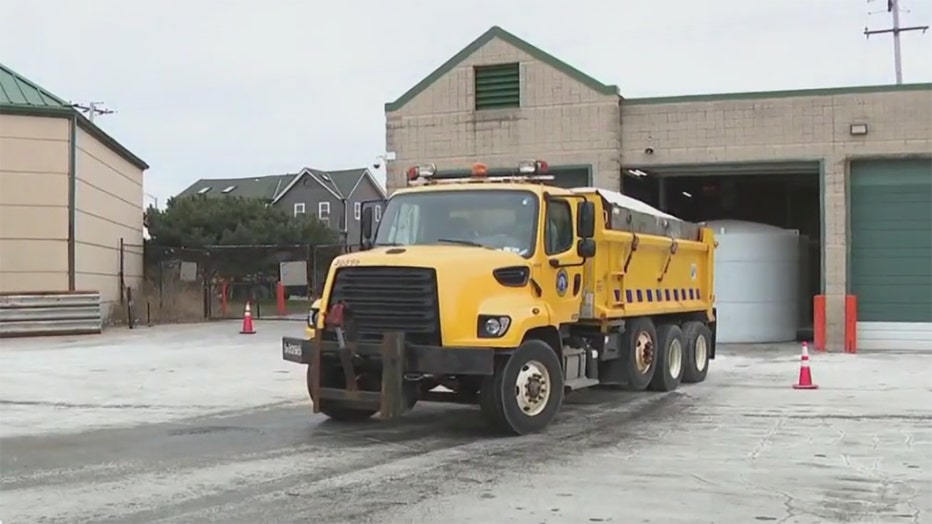Milwaukee DPW road salt trending down; what drivers should know
MILWAUKEE - The Milwaukee DPW salt usage has been trending down in recent years. Instead, the city is relying more on brine before storms. Supporters of cutting salt say it’s better for the roads, environment and drinking water.
"This is a huge environmental issue, yet I don’t know what the alternative is, because if you quit putting down salt, there’s going to be a revolution," said Ald. Robert Bauman.
SIGN UP TODAY: Get daily headlines, breaking news emails from FOX6 News
The city doesn't plan to eliminate salt, but the average salt use has been going down. According to Milwaukee Department of Public Works data, the five-year average salt usage from 2013-2017 was 57,787 tons . The most recent five-year average is down to 36,508 tons.
In addition, the tons per inch average was 1,200 tons per inch; in five years, it has gone down to 840 tons per inch.
"We’ve already made and implemented some of these changes. And there’s been very little notice to it, and that’s because we’re very strategic, small, incremental changes towards something better," said Danielle Rodriguez with DPW's operations division.

Milwaukee DPW salt truck
Instead of salt, the city is relying more on plowing.
"Correct me if I'm wrong, but our plowing protocol is we don’t even use plows up to 4 inches, we rely on salt to clear the snow," Bauman said.
That process is changing, Rodriguez responded.
The city is taking ongoing steps to lower salt usage. That includes training city plow drivers and calibrating machines to make sure they aren’t over applying.
A big reason the salt levels are going down is the city is spraying brine before the storm. Rodriguez said the city started experimenting with brine, a water and salt solution with less sodium, in the mid-2000s. Its use became more regular in 2017.
FREE DOWNLOAD: Get breaking news alerts in the FOX6 News app for iOS or Android.
"Brine, because the sodium and the chloride have broken apart, they are already available to start melting immediately," said Allison Madison with Wisconsin Salt Wise. "When you pre-wet salt, you don’t get that bounce and scatter. You guys have probably gone behind salt trucks before, and you see the salt, and it’s bouncing out of the lane."
Madison said more than 30% of salt can be lost outside the lanes of traffic, something that brine helps prevent.
Madison said there are other reasons to limit salt.
"It corrodes metal, damages concrete, so if you look at the all the damage that salt does to vegetation, infrastructure, repairing roads and bridges more frequently, for every dollar we spend on salt, you guys are spending $10 to repair the damage salt does," she said. "It prematurely ages your bridges and your roads and vehicles."
Madison shared examples of how other Wisconsin communities have cut their salt usage. She said Cudahy has dropped salt use by 66.9% in a few years.
Milwaukee is planning to share more broadly about the value of cutting down on salt.
"It’s really about bringing awareness to them," Rodriguez said. "It’s not going to be completely bare pavement, and there’s nothing that’s changing this year as opposed to last year. We’re still using a ton of smart salting principles."
Milwaukee is hitting the airwaves with public service announcements, paid for using a $30,000 Department of Natural Resources grant.
One video features a checklist of what people can do at home, including to "use salt sparingly." It shows the actor measuring the cup of salt to make sure he’s not using too much on his property.
The second ad features Milwaukee snow plows and this message: "We drop less salt than we ever have in years. Salt never goes away. It flows through our sewer system, going into our rivers and lakes. It impacts wildlife as well as us."
The city DPW said since they have already implemented changes in previous years, this year drivers won't experience any noticeable differences compared with last year. The city can't estimate how much salt it will use, because that all depends on the weather, but they are taking ongoing efforts to continue the downward trend seen in recent years.


